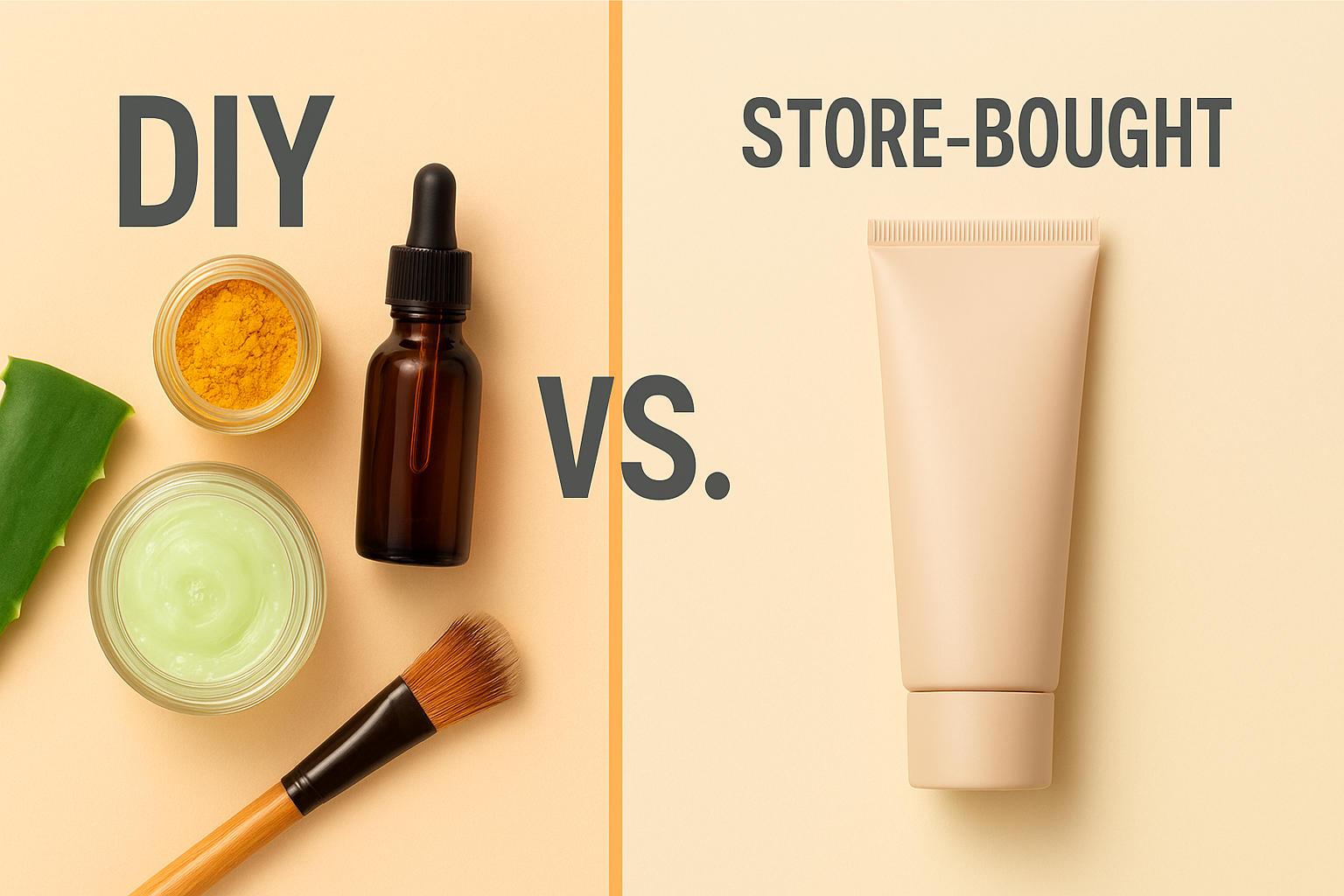When it comes to achieving flawless skin, many people turn to skin tone adjusting formulas. These products are designed to neutralize redness, correct discoloration, and create a more even complexion. But here’s the big question: should you make your own DIY skin tone adjusting formula or buy one from the store?
Both options have their pros and cons, and choosing the right one depends on your budget, skin type, lifestyle, and preferences. In this guide, we will break down the advantages and disadvantages of each so you can make an informed decision.
What is a Skin Tone Adjusting Formula?
A skin tone adjusting formula is a cream, serum, or primer designed to balance uneven skin tones. It often contains pigments or color-correcting agents that adapt to your natural skin shade. These formulas can help with:
- Reducing redness (rosacea or irritation)
- Brightening dull complexions
- Blurring dark spots or hyperpigmentation
- Creating a smooth base for makeup
The popularity of these formulas has grown because they offer a simple way to achieve a natural, even-toned look without heavy makeup.
DIY Skin Tone Adjusting Formula: Pros and Cons
Making your own skin tone correcting product at home can be appealing — especially if you love experimenting with skincare. Let’s explore its pros and cons.
Pros of DIY Formulas
- Cost-Effective
Most DIY recipes require ingredients like aloe vera gel, essential oils, or natural clays that are inexpensive and readily available. - Customizable
You control what goes into the formula. You can tailor it to your skin’s unique needs — for example, adding turmeric for brightening or green tea extract for calming redness. - Natural Ingredients
DIY products can be free from harsh chemicals, parabens, or artificial fragrances, making them safer for sensitive skin. - Creative Satisfaction
There’s something fun and empowering about creating your own skincare products. It allows you to experiment and find what works best for you.
Cons of DIY Formulas
- Inconsistent Results
Without proper formulation knowledge, it’s hard to achieve a consistent texture or shade that truly adapts to your skin tone. - Short Shelf Life
Homemade products usually don’t have preservatives, so they can expire quickly and may harbor bacteria if not stored properly. - Risk of Allergies or Irritation
Some natural ingredients can still cause irritation or allergic reactions if not tested beforehand. - Time-Consuming
Making, testing, and adjusting your DIY formula can take time, which may not be ideal for those with a busy schedule.
Store-Bought Skin Tone Adjusting Formula: Pros and Cons
Now let’s look at ready-made products you can buy online or at your local beauty store.
Pros of Store-Bought Formulas
- Scientifically Formulated
Store-bought formulas are developed by cosmetic chemists to deliver consistent results. They often include proven ingredients like niacinamide, hyaluronic acid, and light-diffusing pigments. - Longer Shelf Life
These products are made with preservatives that keep them safe and effective for months or even years. - Wide Variety of Options
From drugstore brands to luxury lines, there’s a product for every budget, skin tone, and concern. - Convenience
No need to mix or measure anything — simply apply and go. Perfect for busy mornings.
Cons of Store-Bought Formulas
- Higher Cost
Some high-quality formulas can be expensive, especially those from premium brands. - Contains Synthetic Ingredients
Many products have silicones, preservatives, or synthetic fragrances that may irritate sensitive skin. - Trial and Error
You might need to buy and test several products before finding the perfect match for your skin tone.
DIY vs. Store-Bought: Which One is Better?
The answer depends on your priorities:
- Choose DIY if you want a budget-friendly, natural solution and enjoy experimenting with skincare.
- Choose Store-Bought if you value convenience, consistency, and professionally tested results.
You can also combine both approaches — use DIY remedies on weekends or as a self-care activity, and keep a reliable store-bought formula for everyday use.
Tips for Choosing the Right Skin Tone Adjusting Formula
- Know Your Skin Type: Look for oil-free formulas if you have oily skin, or hydrating ones if you have dry skin.
- Patch Test: Whether DIY or store-bought, always test on a small area first.
- Check Ingredients: Avoid products with alcohol or harsh chemicals if you have sensitive skin.
- Read Reviews: Customer reviews can help you find products that work for similar skin tones.
Final Thoughts
Both DIY and store-bought skin tone adjusting formulas have their unique benefits. The best choice comes down to your budget, preferences, and skin needs. If you’re a skincare enthusiast, DIY can be fun and rewarding. If you prefer quick, reliable results, store-bought products may be your go-to.
Whatever you choose, consistency is key. Pair your formula with a good skincare routine — including sunscreen — to achieve and maintain an even, glowing complexion.




